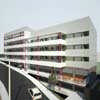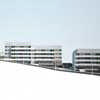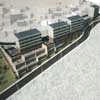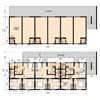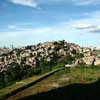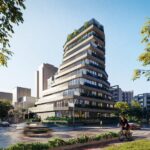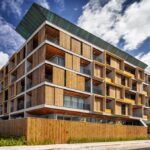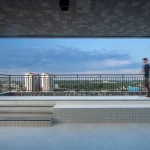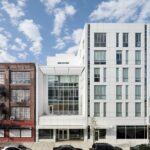Santa Lucia Favela, Belo Horizonte Housing, Brazil Architecture, Architect
Santa Lucia Favela, Brazil
Belo Horizonte Social Housing: Vila Viva – design by Horizontes Arquitetura
28 Nov 2012
Santa Lucia Favela – Brazilian Social Housing
Brazilian Neighborhood Design
Design: Horizontes Arquitetura
Belo Horizonte, Brazil
The Santa Lucia favela is located in the central-south of Belo Horizonte, a very dense and neighborhood of 10,000 people on a hill that neighbors some of the most expensive addresses in Belo Horizonte. As part of the Vila Viva program run by the municipality, Santa Lucia is having its infrastructure improved. That entails turning several alleyways onto streets, building sewage mains underneath the new roads and public plazas where space is available.
One of such interventions is the extension of the favela’s exsiting main street (Rua Principal) and the creation of a new road, called Bicão. The new road will connect the Santa Lucia dam at the bottom of the hill to the Nossa Senhora do Carmo (main southern gate and connection to Rio de Janeiro) avenue hundreds of feet above.
The plan developed by municipality dedicated the part nearest to Avenida Nossa Senhora do Carmo to new residential and commercial units that should house the residents displaced by either the public works (roads/sewage/plazas) or because they live areas with high risk of mudslides.
The solution designed by Horizontes Arquitetura is based on mixed use structures with residence and retail. The commercial use of the ground floor is an innovation of this project, never before used by Urbel projects in the shanty towns of Belo Horizonte. Supported by the most progressive literature on social housing throughout the world, mixed use structures give the residents flexibility to live in close proximity to work (one of the attractions of the any centrally located favela) in addition to facilitating access to goods and services to all other residents. In reality, the mixed use already happens informally in all favelas and this possibility should have been embraced by the government a long time ago. The new development at Bicão street will surely work as a pilot project and allow for rigorous evaluation of the integrated operation of these uses in future interventions in Brazilian favelas.
The formal solution calls for staggered boxes, taking advantage of the slope (as much as 50 ft), creating buildings with variable height (maximum 5 floors) and private terraces. Along Bicão street (with more traffic) will be deployed the main retail units. The steeper part of Bicão street facing the conservation area will be occupied by institutional buildings. Public terraces overlooking the conservation area encourage the visual connection and staircases provide the necessary accesibility. The institutional areas are planned for various community activities such as meeting rooms, classrooms, daycare, police station, etc.. The occupation of the Bicão street with public program also help public safety by providing the neessary vitality to the street.
Commercial activities provides a source of income besides safety and vitality to the street. With the informal economy estimated to be 18% of total Brazilian GDP but up to 40% for favela inhabitants, this even more important. The Bicão housing project includes two stories of commercial space, one at street level where retail could work better and for which a wide sidewalk was designed, supporting all kinds of public events and activities. One story above, leveled with the existing community on the other side, spaces for workshop and also some retail were located.
In all buildings the stairwell was pushed to the side to optimize the use of space, providing a linear volume that is ideal for the narrow site. The staircase volume is as open as possible to avoid the problem of “control” in circulation areas which is the largest source of conflict among residents of multifamily buildings for lower incomes. Moreover, open stairwells and corridors allow ample natural ventilation and protect the windows from direct sunlight, improving comfort levels inside the units. Across the structure the windows are facing the conservation area, ensuring privacy, ventilation and better views of the landscape.
Another novelty of this typology are the parking spaces for vehicles and motorcycles in all buildings, in response to insistant population demand.
The buildings at Bicão street represent a significant step forward in terms of housing typologies for the Vila Viva prokect, no doubt superior to the standard design that was implemented before and whose problems and limitations we studied in detail so as not to repeat the same mistakes.
While accessibility and sanitation have been the flagship of Vila Viva project so far the buildings at Bicão street represent the possibility of significant improvement also in residential typologies.
Santa Lucia Favela images / information from Horizontes Arquitetura
Location: Santa Lucia, Belo Horizonte, Brazil, South America
Architecture in Brazil
Brazilian Architecture Design – chronological list
Belo Horizonte Architecture News
Belo Horizonte Architecture – Selection
Bar-Pool-Gallery, Nova Lima, MG
Design: BCMF Architects
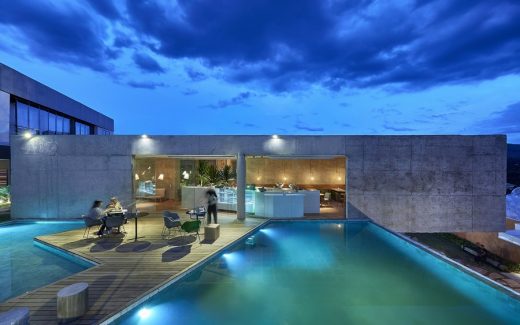
image : Jomar Bragança
Bar-Pool-Gallery by Belo Horizonte
Structural Archaeology, Moeda, Minas Gerais
Design: Carlos M. Teixeira – Vazio S/A, architects
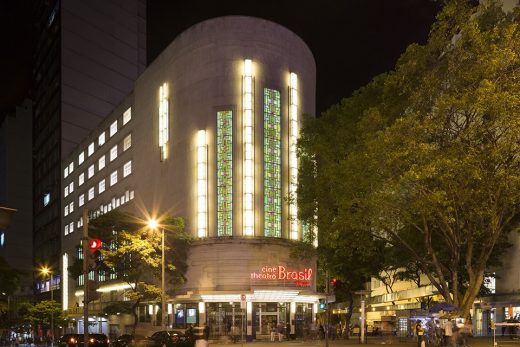
image from architects
Structural Archaeology in Belo Horizonte
Brazil Architecture
American Architecture Walking Tours : city walks by e-architect
More information about Brazilian favela buildings on e-architect:
Rocinha Favelas, Rio de Janeiro
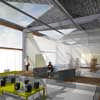
image : Lee Miles
Brazilian Favela Buildings
Brazilian Architecture – Selection
Rio Olympic Park Buildings, Rio de Janeiro
BCMF Arquitetos
Rio Olympic Park Buildings
, SP
Marcio Kogan
Paraty House
Theater Unicamp Campus, Campinas
Una Arquitetos
Theater Campinas
Comments / photos for the Santa Lucia Favela – Belo Horizonte Housing page welcome


